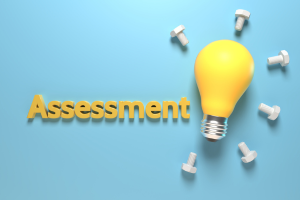 Today’s guest blogger is Rachelle Mire, senior account executive at McQuaig, a global leader in talent management solutions. McQuaig assessments are designed to provide a deeper insight into a candidate’s personality, cognitive, and behavioral attributes. With over 50 years of experience, McQuaig assessments provide a comprehensive view of a candidate and their potential to succeed in a organization while shedding light on the most important areas of employee development. This post discusses how to use assessment tools successfully and appropriately.
Today’s guest blogger is Rachelle Mire, senior account executive at McQuaig, a global leader in talent management solutions. McQuaig assessments are designed to provide a deeper insight into a candidate’s personality, cognitive, and behavioral attributes. With over 50 years of experience, McQuaig assessments provide a comprehensive view of a candidate and their potential to succeed in a organization while shedding light on the most important areas of employee development. This post discusses how to use assessment tools successfully and appropriately.
If you’re in the recruitment or executive search world, you know how crucial it is to find the perfect match for a role. It’s like matchmaking, but for the professional world. That’s where talent assessment tools come in and integrating them into your process can be a game-changer. But how do you do it in a way that feels natural and really works? Let’s dive in together.
1. Picking Your Tools and Setting the Bar
First things first, you’ve got to choose the right assessment tool. Think of it like picking out the right pair of shoes – you want something that fits well and suits your style. McQuaig offers a whole wardrobe of options, so you can find the perfect fit for different roles and industries. Once you’ve got your tool, set some benchmarks. This is like having a map in hand; you know exactly what you’re looking for in a candidate.
2. Timing is Everything
Now, when do you bring in these tools? Too early, and you might scare off great candidates. Too late, and you might waste time on the wrong ones. A sweet spot? Right after the initial resume shuffle and before you get down to the final chats. And don’t forget to share your benchmarks with your recruitment team – they need to know the plan too!
3. Get Everyone on the Same Page
Make sure your whole team knows how to use these tools and what those benchmarks mean. It’s like having a secret recipe; everyone needs to know the ingredients to cook up a great hire.
4. Keep it Real with Candidates
Be upfront with candidates about what’s going on. Let them know that these assessments are here to help find the best fit for everyone – it’s not about passing or failing. Transparency is key, and it shows you care.
5. Dive Deeper in Interviews
Use the insights from the assessments to really get to know the candidates in the interviews. Think of it as having a cheat sheet – you know what areas to probe into and can have a real conversation about it.
6. Keep Things Fresh and Relevant
Don’t just set your benchmarks and forget about them. The world changes, industries evolve, and your benchmarks should too. Regularly take a step back, look at what’s working and what’s not, and make tweaks as needed.
Integrating assessment tools and setting benchmarks doesn’t have to be stiff and formal. It’s all about finding the right tools, setting clear standards, keeping everyone in the loop, being transparent with candidates, diving deep in interviews, and always staying on your toes. It’s a journey, but with these steps, you’ll be on the right path to making great matches in no time. Happy recruiting!